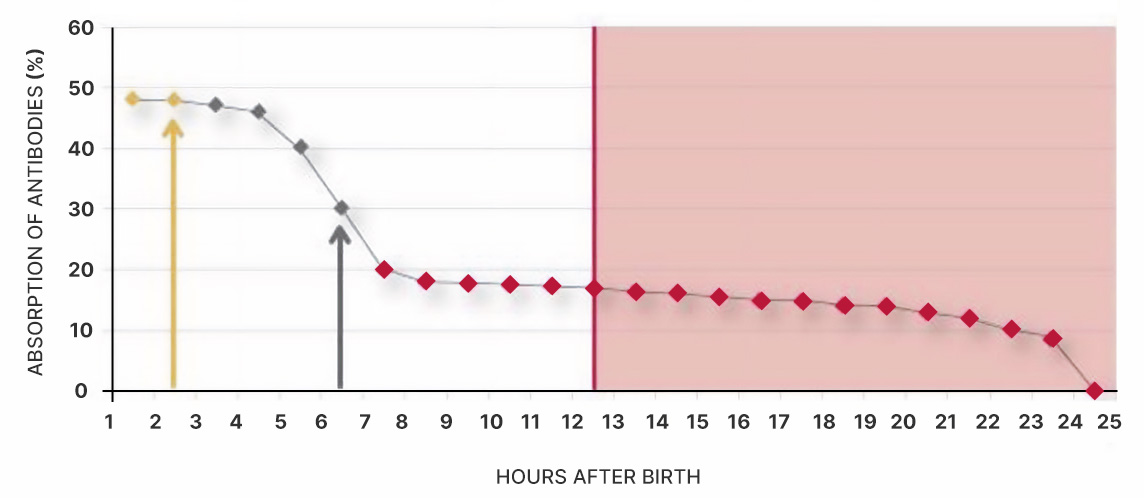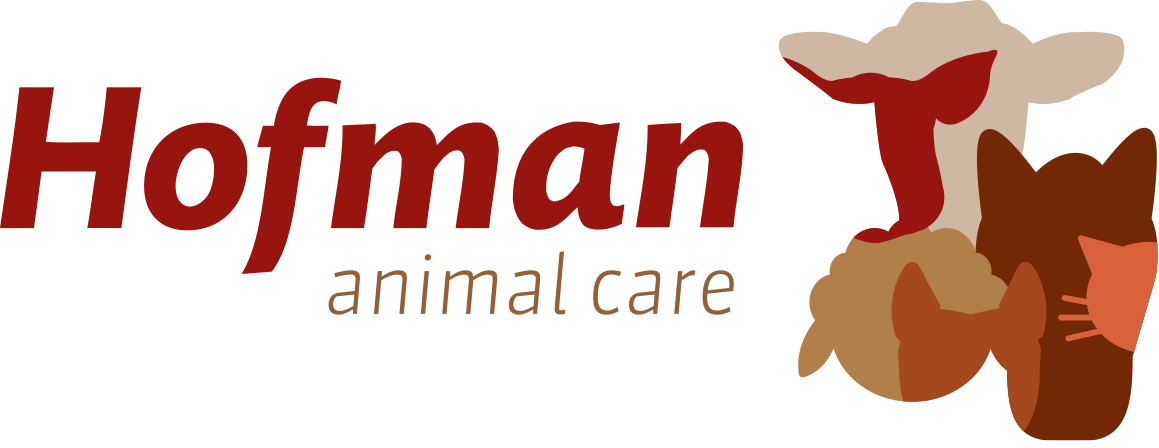The importance of colostrum for newborn animals
The importance of colostrum in building immunity is well known to most people. A good colostrum, the first milk, is rich in so-called immunoglobulins. These are antibodies, produced by the immune system in response to potential pathogens encountered by the immune system. These antibodies come in different types, with the immunoglobulin G (IgG) type being the most common. Because a newborn animal has not yet had a chance to produce its own antibodies and thus build up resistance, it is quite vulnerable during the first period. The transfer of antibodies from colostrum to the newborn animal is therefore very important, but at the same time very time-dependent. Research has shown that the intestinal wall is open to absorbing immunoglobulins only during the first period after birth, but this decreases soon after birth and after 24 hours the antibodies from colostrum can actually no longer be absorbed, as the graph below illustrates.
Time management

It is therefore very important to provide the newborn animal with sufficient good quality colostrum in the first period after birth. For lambs, the guideline here is 10% of the birth weight in colostrum with a content of at least 50 grams of IgG per litre. For calves, it is recommended to provide at least 150-200 grams of IgG. These antibodies from colostrum give the newborn animal protection for the first few weeks of life, after which, 4-5 weeks after birth, the animal's own built-up defences take over.
But colostrum is more than just antibodies. A newborn animal has to start maintaining its own body temperature after birth, which can take several days. Young animals mainly use so-called brown adipose tissue to regulate temperature, converting fat into heat. At the time of birth, the young animal has only a limited supply, so it is important that this is replenished to prevent the newborn from running out and creating a risk of hypothermia. It is therefore important that colostrum contains sufficient energy in the form of colostrum fat, which consists of specific fats, which can be converted into heat. In addition, colostrum fat contains the fat-soluble vitamins A, D, E and K.
Finally, colostrum contains several other specific components that support the newborn animal. Besides fat, these include protein, which is important for growth. Furthermore, colostrum contains a growth factor, IGF-1, which, besides supporting cell development, also plays a role in the conversion of fat tissue into heat. In addition, colostrum contains substances such as lactoferrin, which, besides playing a role in resistance, also supports intestinal development.
That the role of colostrum is greater than just building resistance can also be illustrated with further research. A trial in calves looked at their gut development. All calves in the trial received colostrum within 2 hours of birth, after which one group received colostrum alone in the 12-72 hour period after birth (A), a second group received a 1:1 mixture of colostrum and milk (B) and the last group received milk alone (C). The microscopic images below show that the development of the villi of the animals that received only colostrum or the mixture of colostrum and milk was much stronger than the calves that received only milk during this period. The more developed the villi are, the larger the intestinal surface area is and thus the capacity to absorb and utilise nutrients. Replacing part of the milk feed with colostrum during the transition from colostrum to milk feed can therefore further stimulate intestinal development.

Source: Pyo et al. (2020), Journal of Dairy Science 103, p.p. 4236-4251.
Colostrum is thus of great importance for the start of the newborn animal. In addition, research has shown that an animal benefits from a good colostrum supply for life. Therefore, choose Colstart Plus, a complete colostrum product, which contains all naturally occurring components, to give the animal the chance of the best possible start.




